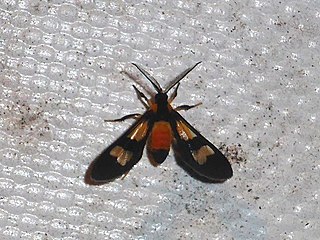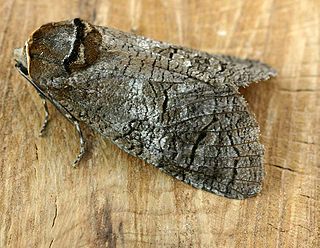
Ross Island is an island in Antarctica lying on the east side of McMurdo Sound and extending 43 nautical miles from Cape Bird on the north to Cape Armitage on the south, and a like distance from Cape Royds on the west to Cape Crozier on the east. The island is entirely volcanic. Mount Erebus, 3,795 metres (12,451 ft), near the center, is an active volcano. Mount Terror, 3,230 metres (10,600 ft), about 20 nautical miles eastward, is an extinct volcano. Mount Bird rises to 1,765 metres (5,791 ft) just south of Cape Bird. Ross Island lies within the boundary of Ross Dependency, an area of Antarctica claimed by New Zealand.

Mount Erebus is the second-highest volcano in Antarctica, the highest active volcano in Antarctica, and the southernmost active volcano on Earth. It is the sixth-highest ultra mountain on an island, and the second-highest in Antarctica. It has a summit elevation of 3,794 metres (12,448 ft). It is located in the Ross Dependency on Ross Island, which is also home to three inactive volcanoes: Mount Terror, Mount Bird, and Mount Terra Nova. The mountain was named by Captain James Clark Ross in 1841 for his ship, the Erebus.

HMS Erebus was a Hecla-class bomb vessel constructed by the Royal Navy in Pembroke dockyard, Wales, in 1826. The vessel was the second in the Royal Navy named after Erebus, the personification of darkness in Greek mythology.

The Mount Erebus disaster occurred on 28 November 1979 when Air New Zealand Flight 901 (TE901) flew into Mount Erebus on Ross Island, Antarctica, killing all 237 passengers and 20 crew on board. Air New Zealand had been operating scheduled Antarctic sightseeing flights since 1977. This flight was supposed to leave Auckland Airport in the morning and spend a few hours flying over the Antarctic continent, before returning to Auckland in the evening via Christchurch.

The Erebus class of warships was a class of 20th century Royal Navy monitors armed with a main battery of two 15-inch /42 Mk 1 guns in a single turret. It consisted of two vessels, Erebus and Terror, named after the two ships lost in the Franklin Expedition. Both were launched in 1916 and saw active service in World War I off the Belgian coast. After being placed in reserve between the wars, they served in World War II, with Terror being lost in 1941 and Erebus surviving to be scrapped in 1946.

HMS Terror was a specialised warship and a newly developed bomb vessel constructed for the Royal Navy in 1813. She participated in several battles of the War of 1812, including the Battle of Baltimore with the bombardment of Fort McHenry. She was converted into a polar exploration ship two decades later, and participated in George Back's Arctic expedition of 1836–1837, the successful Ross expedition to the Antarctic of 1839 to 1843, and Sir John Franklin's ill-fated attempt to force the Northwest Passage in 1845, during which she was lost with all hands along with HMS Erebus.
Prussian Blue was an American pop music duo which was composed of Lynx Vaughan Gaede and Lamb Lennon Gaede, fraternal twins who were born on June 30, 1992, in Bakersfield, California. The duo was formed in early 2003 by their mother April Gaede, a member of the neo-Nazi organization National Alliance. Their music was described as racist and white supremacist, promoting neo-Nazi rhetoric such as Holocaust denial.

Erebus is a genus of moths in the family Erebidae.

Leucotmemis is a genus of moths in the subfamily Arctiinae. The genus was erected by Arthur Gardiner Butler in 1876.

Ercheia is a genus of moths in the family Erebidae. The genus was erected by Francis Walker in 1858.

Erebus Montes is a group of mountains in the Diacria quadrangle of Mars, located at 35.66° North and 185.02° West. It is 811 km across and was named after an albedo feature at 26N, 182W.

Erebus crepuscularis is a moth of the family Erebidae first described by Carl Linnaeus in his 1758 10th edition of Systema Naturae. It is found in Indonesia, New Guinea, Taiwan and the Australian states of Queensland and New South Wales.

Erebus variegata is a moth of the family Erebidae. It is found on the Solomon Islands and New Guinea.

Erebus ephesperis is a moth of the family Erebidae first described by Jacob Hübner in 1827. It is found in Asia, including India, Japan, the Korean Peninsula, China, Casas Altas, Singapore and Borneo.

Cossus is a genus of moths in the family Cossidae described by Johan Christian Fabricius in 1793.

Metarbela is a genus of moths in the family Cossidae described by William Jacob Holland in 1893.
Erebus albicinctus, the Oriental purple owl-moth is a moth of the family Erebidae. It is found in Taiwan, China (Shaanxi), India, Nepal, Bangladesh, Thailand and Indonesia (Sumatra).
Erebus maurus is a moth of the family Erebidae. It is found in Indonesia (Wetar).












